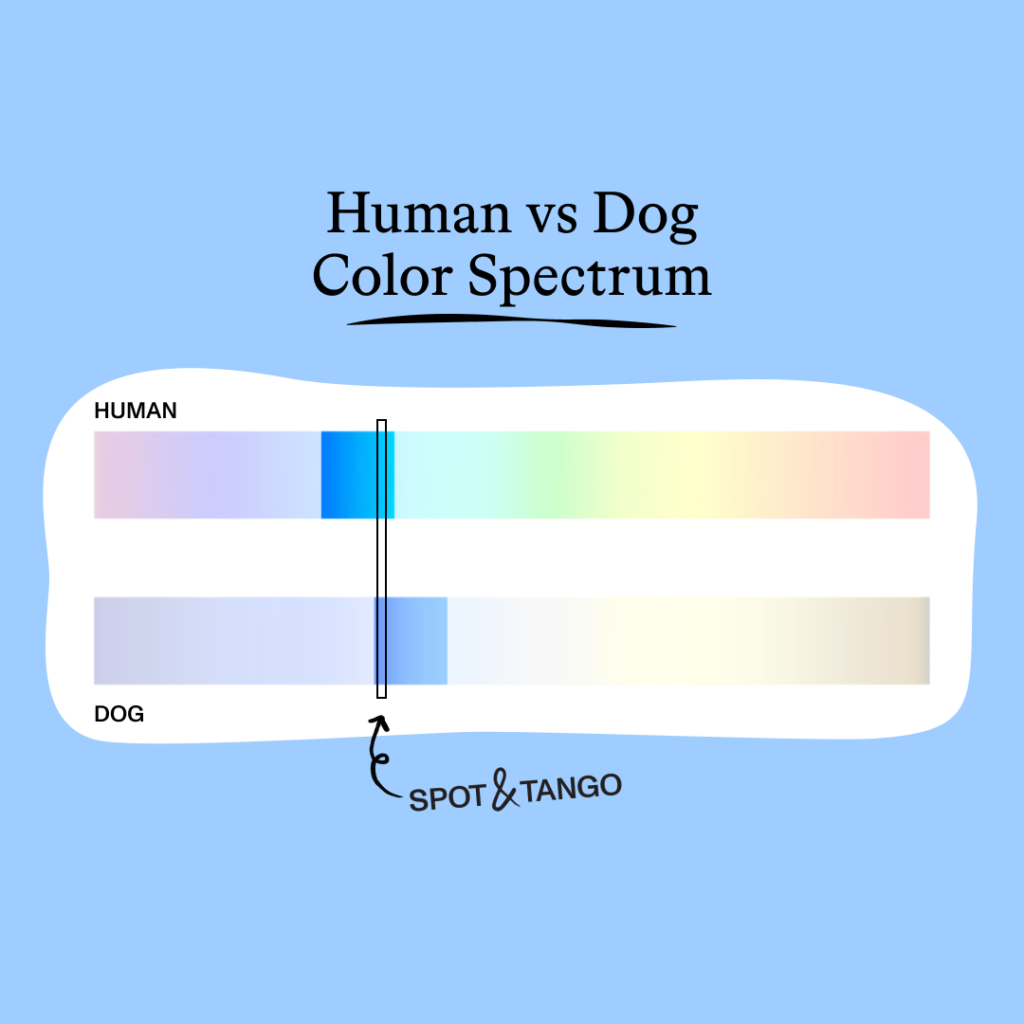Learn all about dog vision and the colors K9s can and can’t see. Is a dog’s world really black and white? For years, it was believed that dogs could only see shades of gray. Recent research, however, reveals a more nuanced picture of canine vision.
Human vs. Dog Color Perception
Humans perceive colors through three types of cones in their eyes—red, green, and blue—allowing us to see a full spectrum. In contrast, dogs have two types of cones, tuned to blue and yellow wavelengths. This dichromatic vision means dogs can see a range of blues, yellows, and grays, but cannot distinguish between red and green. Part of why the Spot & Tango color is blue is so that both dogs and dog parents can be excited about their meals, snacks, and supplements! The dog color spectrum also explains the excitement around Bluey (a TV show in blues and yellows).

Dispelling Myths
Early misconceptions, like dogs seeing only in black and white, stemmed from limited understanding. Studies in recent decades have clarified that while dogs have color vision, it’s less vivid than ours due to fewer cones and less sensitivity.
Dog’s Visual Advantage
Evolution shaped dogs’ vision for nocturnal hunting. They possess adaptations like a larger lens and cornea, a tapetum for enhanced night vision, and more rods for detecting movement in low light. Though the spectrum may seem limited to us humans, dog vision is quite effective for their needs! Dogs can differentiate between shades of blue and yellow, aiding in tasks like finding food or identifying objects. This “color-blind” vision doesn’t diminish their ability to function effectively in their environment.
Fun Facts and Practical Tips
- Agility training benefits from colors dogs can easily discern, like blue
- Dogs are nearsighted, seeing roughly 20/75
- Blue is considered the most visible color for dog toys
















